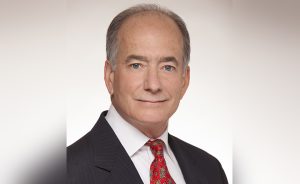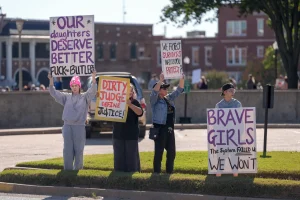When it comes to expert witness reports surrounding chartered surveying and construction disputes, the information at hand is not always accurate and consistent, making the expert witness’ analysis that much more complex.
Here we talk to Johnathon Gillies, a Chartered Building Surveyor and the Managing Director of Johnson Gillies Ltd, who discusses the challenges involved in producing such reports, details the differences in his work between commercial and residential property disputes, and briefs LM on the impact of civil procedure rules being introduced in the UK.
What does the expert witness role of a chartered surveyor involve on a day to day basis?
The role of the Chartered Surveyor is as indicated in the RICS Guidance Note ‘Surveyors Acting as Experts’. We are expected to provide an unbiased and objective opinion of the position. However, this is often unhelpful to the legal team and we try to provide advice to assist in supporting the case being presented. This does rely on us being briefed with the facts correctly presented.
The roles will be either as a Joint Expert, Court Appointed, or representing one side. The instructing solicitor will advise on the CPR S35 obligations.
We are often first approached by the solicitors representing the claimant or defendant. From the initial discussions, we often ascertain that there are questions that have already been raised which we need to answer. Once we have a firm instruction we often find it useful after we have reviewed the initial information to either have a conference or meeting with the client and solicitor to agree upon the exact questions that we are to answer or clarify the existing questions if they are too open. The reports may be disclosed so a clear understanding of privity of the report is needed.
The typical instruction will be provided by the legal team with specific points to be answered. Our role will be to inspect the property, take notes and records, view relevant documents, research the technical issues, give references and provide a report. We are very conscious that we are not lawyers, and must avoid presenting the evidence beyond our brief.
It is often a very hard role to be involved in and remove one’s self from taking sides on a personal level as the claimant or defendant tend to try and stress their own particular side of events that have occurred, which often appears as if they are trying to sway decisions. We have an overriding duty to the courts to give independent and impartial evidence based on the information and facts at hand, so removing any personal feelings and not taking sides is paramount for us.
What kind of inspection cases are you commonly appointed for and what principal issues do these present?
Obviously, as a Chartered Building Surveyor we deal primarily with construction related matters ranging from fire damaged property repairs, Housing Act disrepair, to poor workmanship in construction contracts in properties. Our principal instructions come through from solicitors or the courts, often relating to contractual matters between contractor and building owners. This tends to be in relation to what the scope of works were originally agreed upon and then the disagreement over payment or the cost of any extra works.
We tend to find that contracts are insufficient and the documentation appended (if it is at all) is generally unclear. The schedule of works are often not in any detail and if they do offer a list of work, it can generally be just a bullet point schedule.
One of our biggest issues when receiving a new instruction to report upon is receiving countless e-mails from both parties that generally have no relevance to the actual case and are usually a history of their arguments rather than the real issue. This often takes a lot of time to sort through what can be used, and can often be wasted time.
Do the difficulties differ when instructed on commercial property based cases as opposed to residential surveying cases?
Yes, commercial property matters tend to be more about the finer details compared to the overall issues as business’ appear to be more savvy when it comes to contracts or documenting the works. We also tend to find that commercial projects have specific professionals that have been advising during the works, which often helps with ascertaining the problems.
Commercial cases tend to be more about technicalities so often need a lot more research into what has gone wrong and the reasons for the dispute. Residential cases are more often over what the building owner thought the contractor was going to undertake.
Can you detail some of the challenges you find in business compliance with UK civil procedure rules (CPR)?
As we tend to deal with the detail of a building dispute keeping up to date with all the changes to the CPR can cause problems. We often find that keeping up to date with the almost yearly changes can create issues especially with the requirements for the courts.
The CPR S35 requirements focus our presentations on the facts and we find that the direction provided in the smaller cases is quite helpful, especially on restricted time matters such as Housing disrepair cases which can sometimes (rarely) be on funding from the public purse. However, there are often Cases where the presentation of interpretation of the facts needs to be developed to provide an alternative opinion to support the case presented for the client. We have to carefully balance the opinion with the duty to the court.
How does an expert witness’ role differ in boundary dispute cases?
Boundary disputes are rarely a clear cut matter and are often over very minor measurements of trespass. Disputes between two neighbours are often very passionate as it is their own property. This often presents major issues when inspecting sites to try and ascertain the level of trespass.
Unlike property related disputes, boundary dispute cases never give a definitive answer, as the only real information to hand is usually vague, and the available research is often limited to historical maps or the original conveyance documents. Old photos are often produced by the relevant parties which can put more doubt into a surveyors mind than make matters clearer.
It is often easier to have boundary disputes assessed by an Expert from each side, so that both may investigate separately and then present to the other the information at hand. This allows compliance with CPR by the two experts corresponding directly, allowing the agreement or disagreement of the actual line of junction to be depicted far quicker; unfortunately, this isn’t always the case. There have been recent proposals to allow boundary disputes to be dealt with by similar legislation to that of the Party Wall etc. Act 1996. We think this would be a successful alternative to litigation, and would be designed to allow practical solutions between surveyors. This may reduce lawyers’ involvement, but I think that the minor disputes are of limited commercial value, and would focus on more remunerative cases which would end in Court anyway.
Overall, how would you say the role of an expert witness chartered surveyor has evolved over the past 20 years?
Since I have been undertaking expert witness instructions, the various procedures have certainly got a lot tighter. Before the CPR 15 years ago, it was common for experts to deliver widely differing opinions in relation to the case at hand. Since the introduction of the rules along with the Guidance Notes and Practice Statements produced by the RICS, the role of the Chartered Surveyor has thus evolved particularly with giving evidence which is to be impartial and unbiased, and especially uninfluenced by the instructing party paying their fees.
The introduction of the CPR has benefited the public by the Experts being able to assess disputes as to whether they are tangible and worth pursuing.
One of the biggest benefits that I have seen is the encouragement for the two Expert Witness surveyors to meet throughout the investigation process, review each other’s reports, and then submit a joint statement on agreement. Like being called to the witness box, this is not for the feint hearted. A meeting between two Experts, especially with no chair to the meetings, can often become very heated if there is a disagreement between the two. The joint statement can or will often raise more questions from the legal team on the joint agreements and disagreements.
Is there any UK legislative change you believe could facilitate the work of chartered surveyors?
The Faculty of Party Wall Surveyors are trialling a boundary disputes document that appears to be successful and will try to help to resolve matters quicker.
Is there anything else you would like to add?
We believe that close cooperation between the whole clients’ legal team is essential for a comprehensive case to be presented. We are all specialist in our field and although one member must manage the case, it is important that the right specialist have input to achieve a strong case. I see the benefits to the client of the coordinated approach being that authoritative opinions are obtained.




















